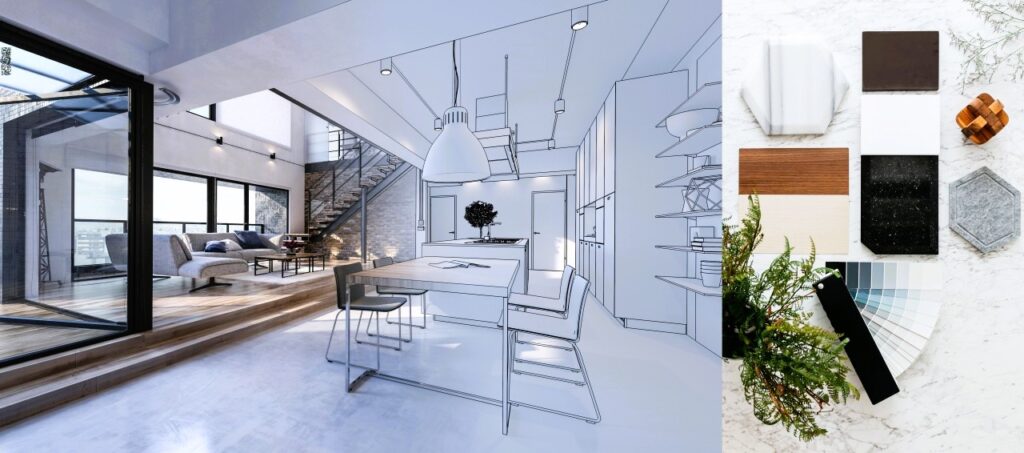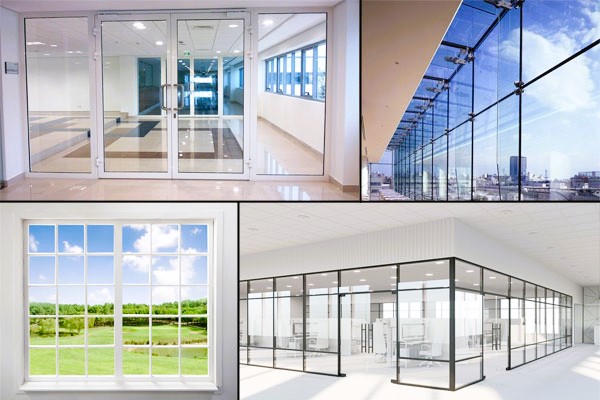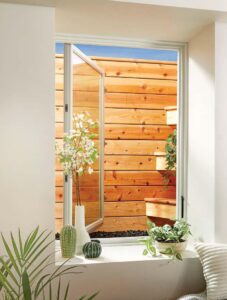Glass, with its transparency and versatility, has played a pivotal role in shaping interior design and architectural aesthetics for centuries. From the grand cathedrals of Europe to the sleek skyscrapers of modern metropolises, glass has been an integral component of architectural marvels. In this article, we will explore how glass influences interior design and architecture, transforming spaces and redefining our built environment.
The Evolution of Glass in Architecture
The use of glass in architecture dates back to ancient civilizations, where it was initially limited to small windows in buildings. However, it wasn’t until the development of modern glassmaking techniques in the 19th and 20th centuries that architects and designers began to fully harness its potential.
Natural Light and Ambiance
One of the most significant ways glass affects interior design is by allowing natural light to flood a space. Large windows, glass walls, and skylights can dramatically change the ambiance of a room. Natural light creates a sense of openness, reduces the need for artificial lighting during the day, and can even improve occupants’ mood and well-being.
In contemporary architecture, the use of expansive glass facades in buildings such as Apple’s flagship stores or the Louvre Abu Dhabi showcases how glass can become an integral part of a building’s design, blurring the boundaries between interior and exterior spaces.
Spatial Illusion and Visual Continuity
Glass has the unique ability to create a sense of continuity and expand the perceived size of a space. Mirrors and glass partitions can give the illusion of a more extensive room, making them valuable tools in interior design, particularly in smaller spaces. Glass railings and balustrades in staircases or balconies contribute to an unobstructed view, enhancing the visual appeal of both residential and commercial spaces.
Energy Efficiency and Sustainability

Modern architecture prioritizes energy efficiency and sustainability. Glass has evolved to meet these demands, with advancements in glazing technology. Double-glazed and low-emissivity (Low-E) glass help reduce heat transfer, making buildings more energy-efficient. Furthermore, some glass manufacturers are developing “smart glass” that can dynamically control sunlight and temperature, further reducing energy consumption.
The incorporation of sustainable practices, such as using recycled glass in building materials, aligns with the growing emphasis on environmental responsibility in design and construction. This approach reduces the carbon footprint of buildings and supports a circular economy.
Privacy and Transparency
Glass can simultaneously provide transparency and privacy, depending on its design and application. Frosted or tinted glass, as well as decorative glass screens, can obscure the view into a space while still allowing light to pass through. This is especially useful in offices, homes, and healthcare facilities where privacy is essential without sacrificing natural light. Modern trends in the use of glass in construction, more details in our article.
Innovations in Glass Technology
The integration of cutting-edge technology has pushed the boundaries of what is possible with glass in architecture and design. Some noteworthy innovations include:
- Smart Glass: Electrochromic and thermochromic glass can change transparency or opacity in response to environmental conditions or user preferences, offering dynamic control over privacy and light.
- Interactive Glass: Glass surfaces equipped with touch or gesture controls can serve as interactive displays, fostering creativity and engagement in various environments.
- Structural Glass: Advancements in structural engineering have enabled architects to create entire buildings with glass facades and even glass floors, providing stunning views and unique spatial experiences.
Conclusion
Glass is not merely a building material; it is a design element that can shape the atmosphere, functionality, and sustainability of a space. Its influence on interior design and architecture is undeniable, ranging from the timeless elegance of stained glass windows in Gothic cathedrals to the futuristic, transparent skyscrapers of today’s urban landscapes.
As technology and sustainability concerns continue to evolve, glass will remain at the forefront of architectural innovation. Its ability to balance aesthetics, functionality, and environmental responsibility makes it an indispensable tool in the hands of architects and designers, allowing them to create spaces that inspire, delight, and connect with the world outside.
For more information on glass standards and regulations, you can visit Wikipedia. These sources provide valuable insights into the technical aspects and industry standards related to glass in interior design and architecture.




